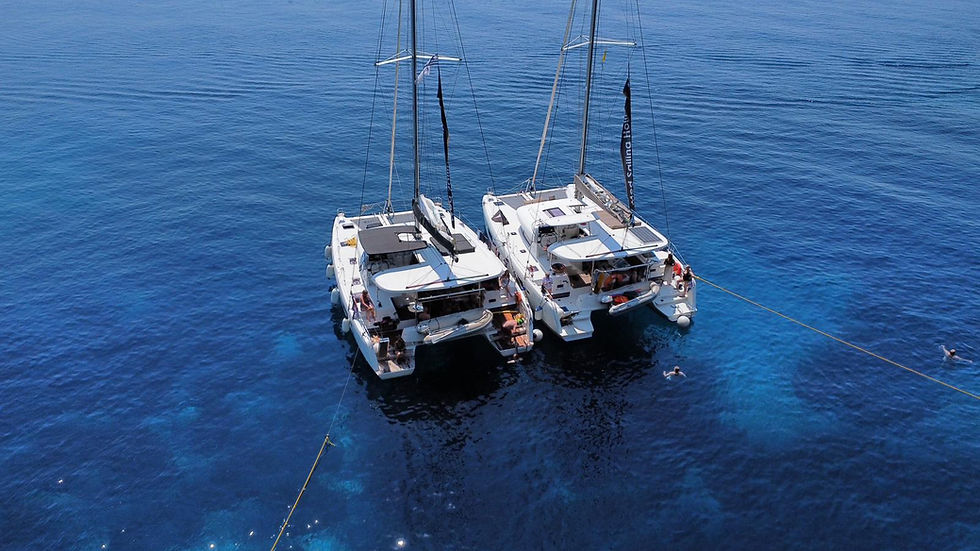Set Sail and Avoid Seasickness
- Med Sailing Holidays

- Jun 21, 2018
- 3 min read

Imagine yourself getting ready for an adventure of a lifetime. All your bags are packed, you are ready, your friends are ready. The only thing that’s left for you to do is to go aboard your luxury yacht, cast the sails and enjoy.
You sail one of the fabled seven seas, marvel at the sunset and found peace by the rocking of the gentle waves. As you get up to take a drink, a sudden burst of nausea hits you. Looking around feels like the entire boat is spinning. Another shot of dizziness and the acrid taste of your breakfast starts to form in your throat. The only way to relieve yourself is to, as a long-term practice, vomit. But will it bring instant relief? It will, but most likely, the feeling will creep again. Not even the biggest aspirin will help at this point.
I FEEL SICK

Motion sickness is a condition wherein the vestibular system’s sense of movement goes in contrast with a visually perceived movement. Although there are many forms of motion sickness, the most common are felt during long drives, flying, simulation and sailing. In fact, the word nausea came from the Greek root, naus, which mean “ship”. The feeling itself acts as a defense mechanism against neurotoxins; the area postrema signals the body to vomit “to resolve conflicts between vision and balance”. There are still a number of theories why a person vomits or suffers from motion sickness, but the main point is to extract toxins to clear the system.
Simply put, seasickness occurs when a person cannot see the motion that his or her body is feeling when they are sailing, or if they cannot feel the motion that their eyes see. These send conflict signals in the brain and in turn, will experience signs and symptoms of seasickness.
SEE AND FEEL THE SIGNS

While all of us are susceptible to motion and seasickness, pregnant women, children, and those who are new to long travels are those who are in the bull’s eye. Anxiety, poor ventilation and windowless vehicles add to the negative feeling as well.
One of the first few signs of seasickness is the feeling of uneasiness. Neophyte cruisers will feel the length of the trip and sudden brush of strong waves on their vessels to be a bit overwhelming. This will pile up if they don’t know how to swim, or if they think that they will have an accident, or get stuck in the middle of the ocean without any backup plan.
The individual will then experience cold sweats, followed by a whiff of dizziness, nausea and eventually, will vomit. Although vomiting will somewhat offer slight relief, it will not erase the entire feeling of being seasick.
DROP ANCHOR

It’s best not to drink alcoholic beverages before or during travel. While this may not apply to all, being drunk will worsen the case of seasickness due to the rocking motion of the yacht or any marine vessel. Eating something that’s not on your usual list will likewise entice you to vomit and be uneasy while traveling. It is also recommended to stay away from strong odors like perfume, gasoline and the like.
Set your sights on the horizon and not at the back. Reading will also trigger vertigo, as well as sitting at the back rather than in front. Whenever possible, spend most of your time on deck where there’s lots of fresh air. Stay hydrated, eat (but not too much) and try to stay relaxed.










Comments